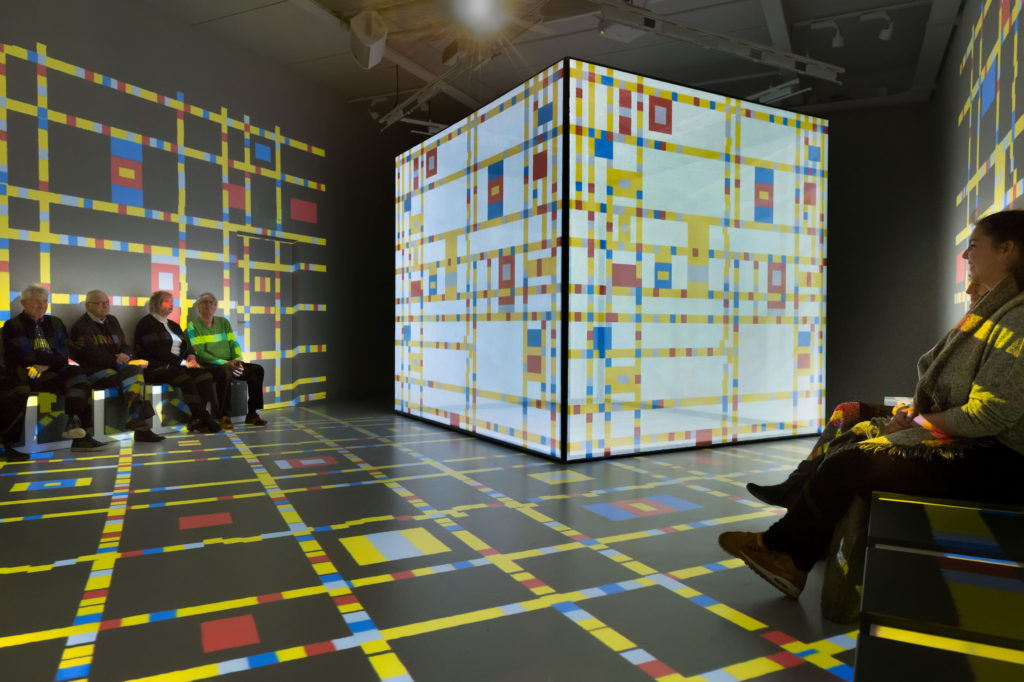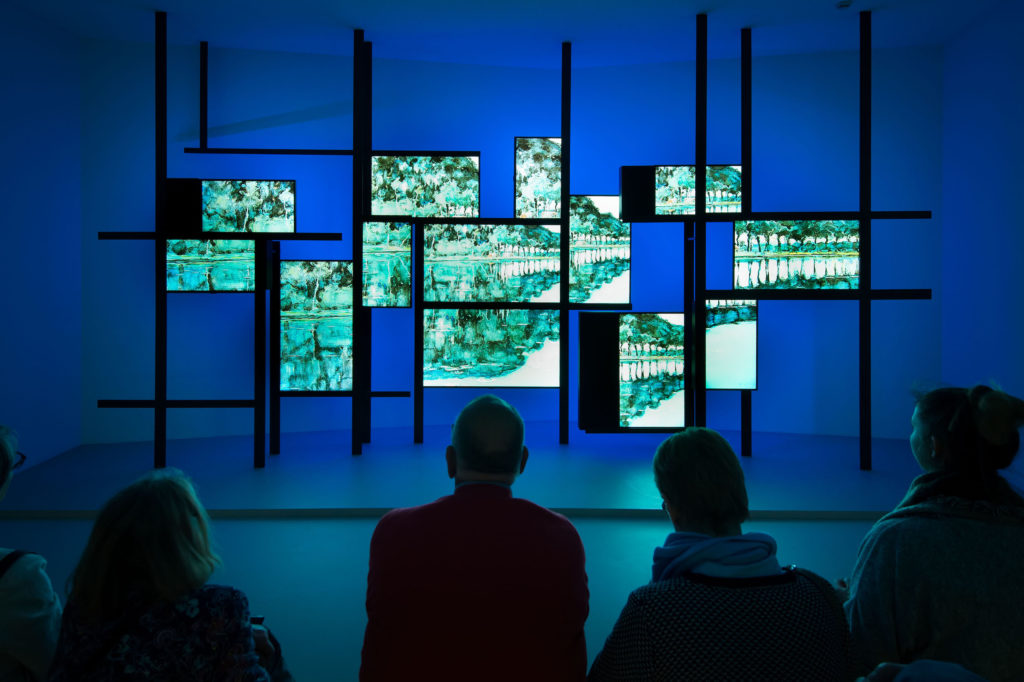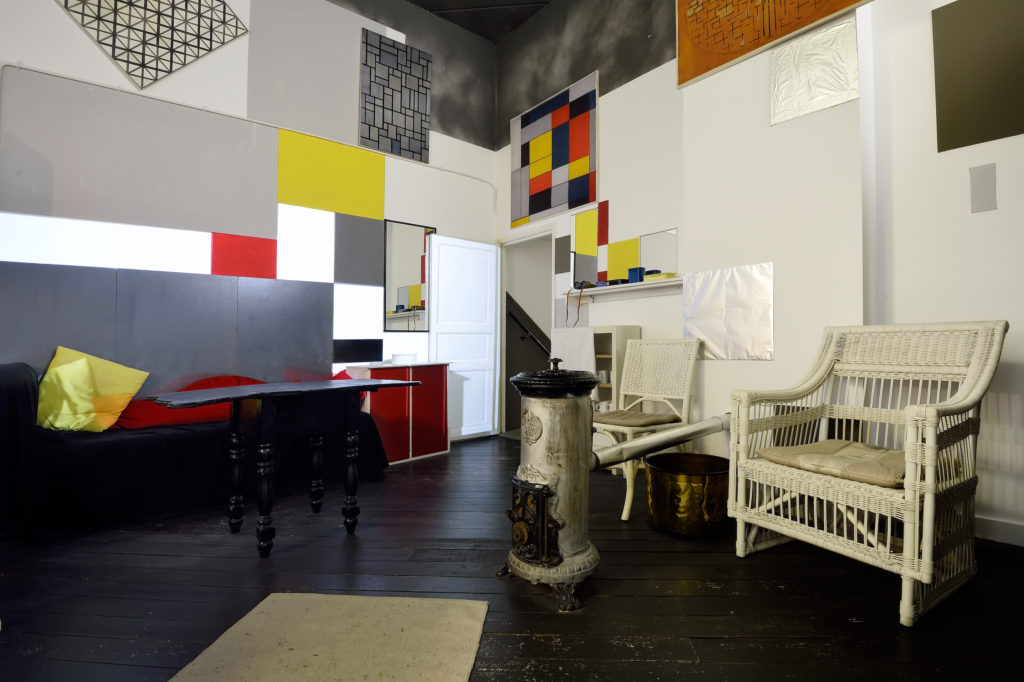

The Mondrian Museum Gets a Modern-Day Makeover
The Mondriaanhuis in the artist's childhood home has adopted a radical new look

Piet Mondrian’s best-known painting is perhaps Broadway Boogie Woogie, a 1943 abstract work inspired not only by the bustling traffic and street lights of New York but especially by the rhythms of jazz. So, it should come as no surprise that it’s jazz music that emerges from the Mondriaanhuis, the Dutch-born artist’s childhood home, outside Amsterdam, which is now a museum and has recently reopened after a significant renovation.
Aiming to avoid being just another stuffy historic house museum, the Mondriaanhuis has adopted a radical new look. Eliminating explanatory text almost entirely, the museum puts engaging video installations and technology at the front and center. It also focuses on household objects like the artist’s baby bassinet, and sounds like his favorite Gershwin. Hoping to show the trajectory of the artist’s career as well as give a sense of what Mondrian was like as a person, the museum director Paul Balthus explains, “we wanted to tell a universal story.”

Mondrian was born and raised in the tiny, tulip-dotted town of Amersfoort, about an hour east of Amsterdam. He planned to be an artist from a young age, his early works focusing on people and windmills, in styles influenced by Pointillism and Fauvism. Later, his style evolved into precise, vividly colored geometric compositions that included some of the modern era’s earliest pure abstractions. An attic gallery of riotous color shows how his famous gridded compositions in red, blue, white, and yellow have been printed on everything from fashion garments to toys to skis.
On one 13-screen video wall, the artist’s key paintings from 1890 through his death from pneumonia in New York, in 1944, are shown chronologically, fracturing into each other. The video illustrates the evolution in a far more interesting way than any wall text could.

The man himself is present throughout the museum displays. There is a projection of Mondrian making tea in a recreation of the Paris studio he lived in before World War I, while another depicts him playing with his gramophone. In one striking video display, as the painter puts lines on a canvas in a corner of the room, a projection of the paint marks slowly spreads across the walls and the visitor is enveloped a nine-foot-high projection of Broadway Boogie Woogie that pulsates to music. We wanted to show “how far ahead of his time he was, how modern he was,” notes Balthus.
The renovation is part of a nationwide salute to the artist and to the centenary of the De Stijl design movement of which he was a part, along with furniture designer Gerrit Rietveld and artist Theo van Doesburg. Mondrian co-founded De Stijl (The Style) magazine with van Doesburg, a publication that later gave its name to the movement that advocated geometric precision, high-quality production of goods for the masses, and the use of primary colors.
In the art journal, Mondrian summed up the movement: “I believe it is possible that, through horizontal and vertical lines constructed with awareness, but not with calculation, led by high intuition, and brought to harmony and rhythm, these basic forms of beauty, supplemented if necessary by other direct lines or curves, can become a work of art, as strong as it is true.”
The Mondriaanhuis is located at 11 Kortegracht in Amersfoort and is open Tuesday through Sunday, 11 a.m. to 5 p.m.






